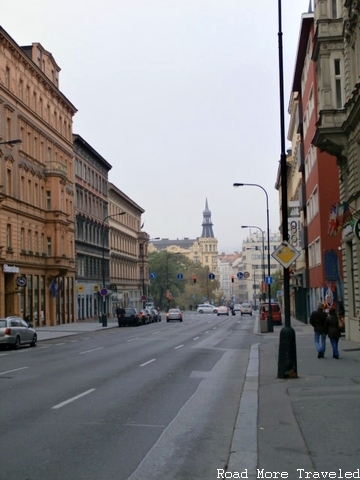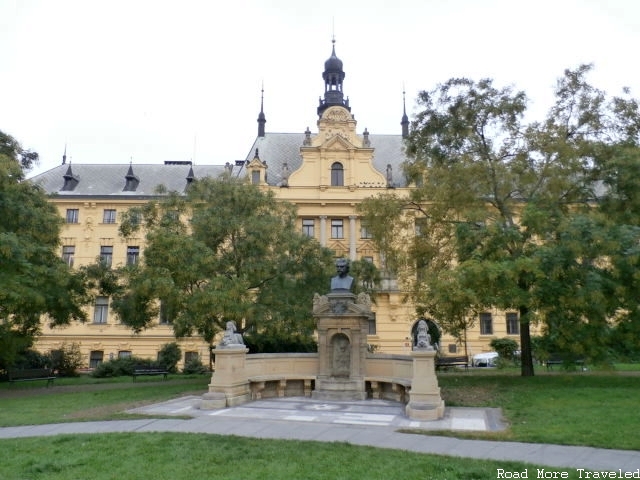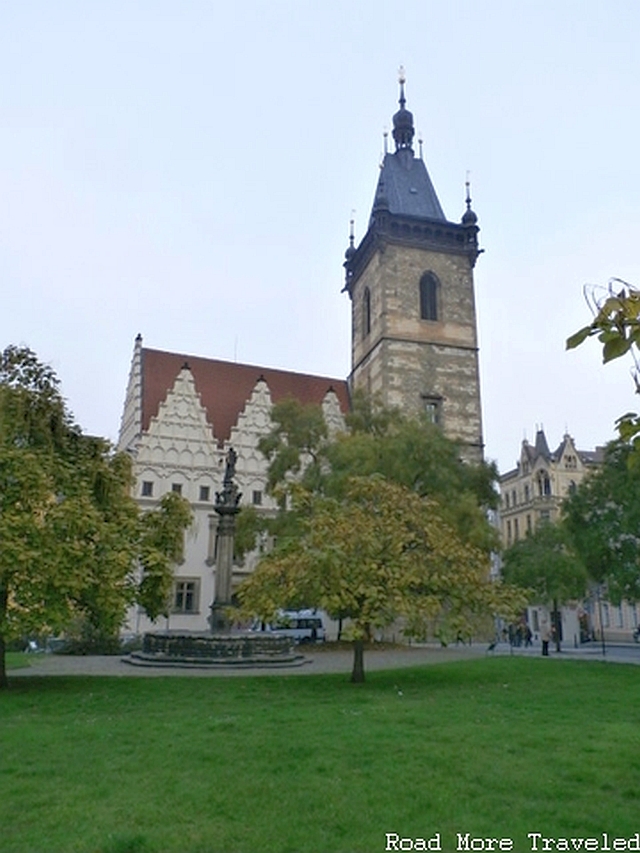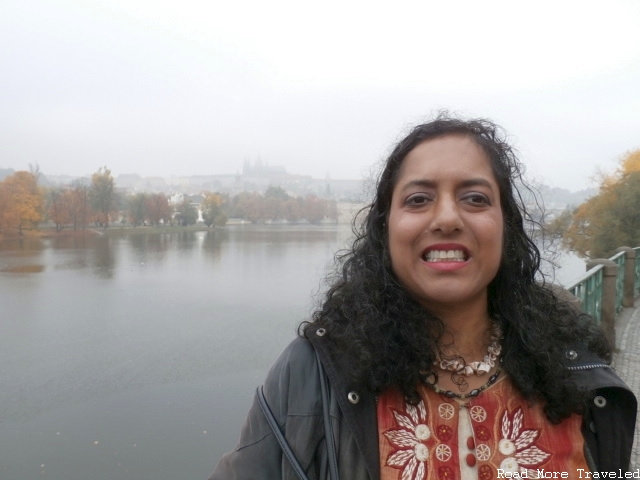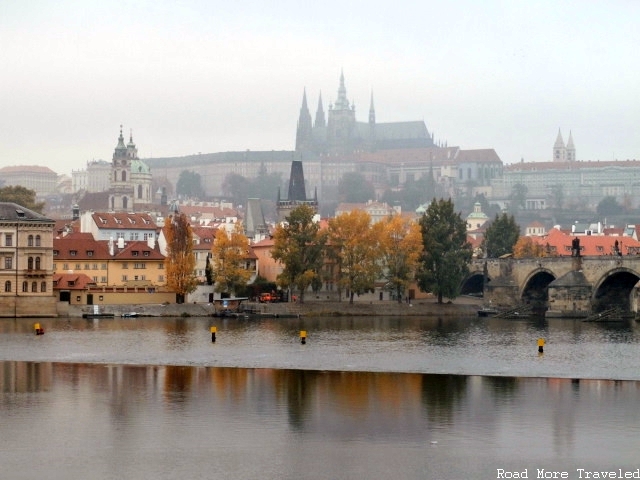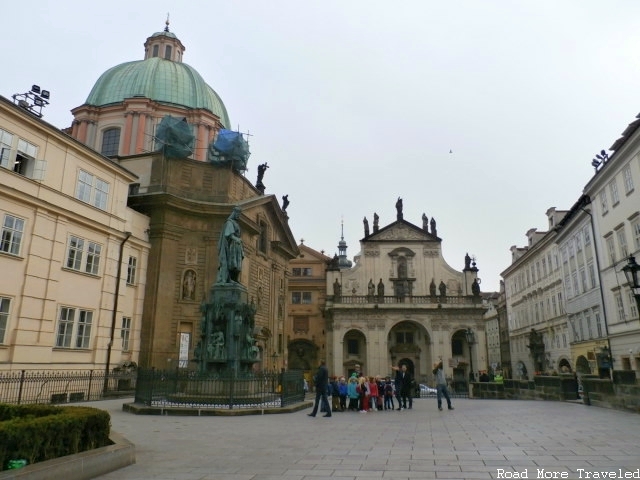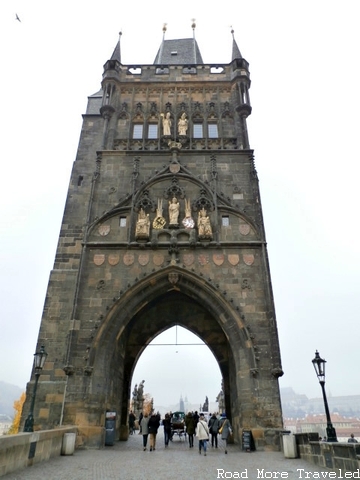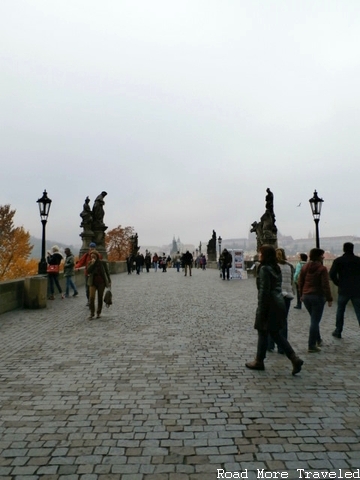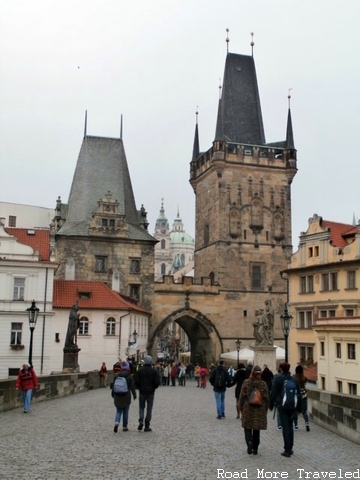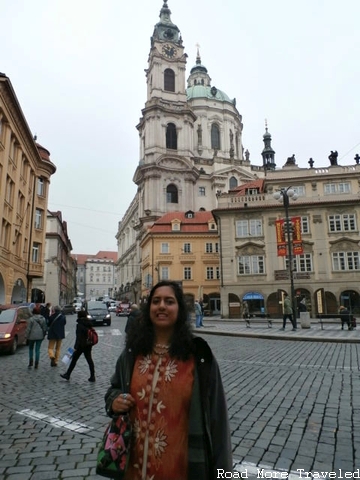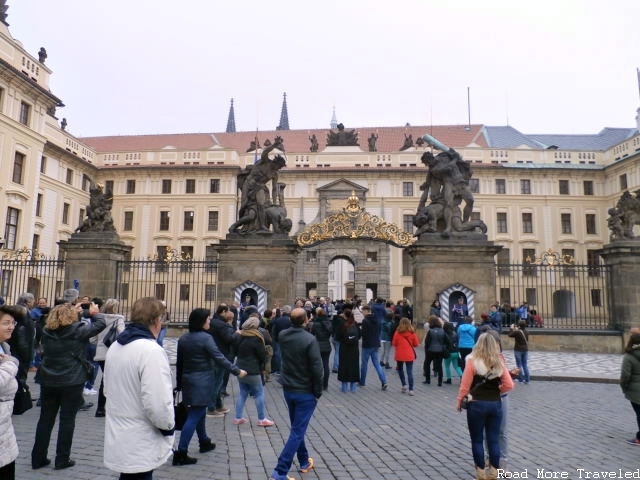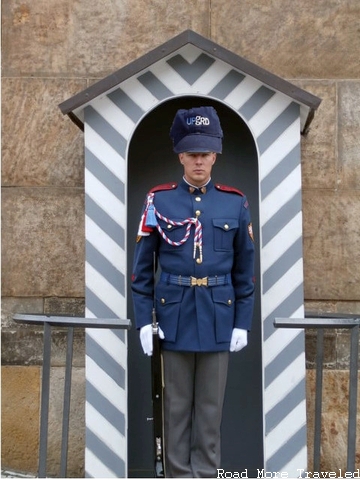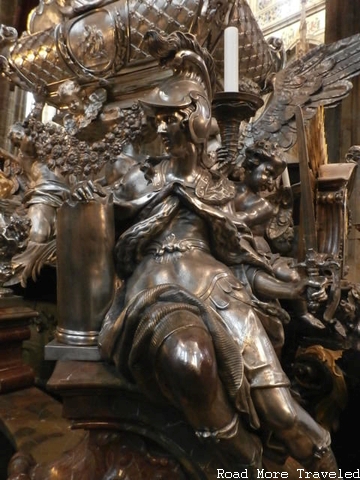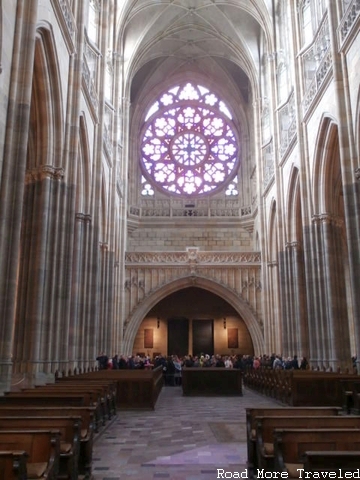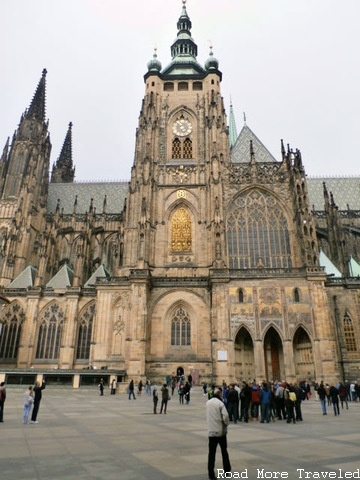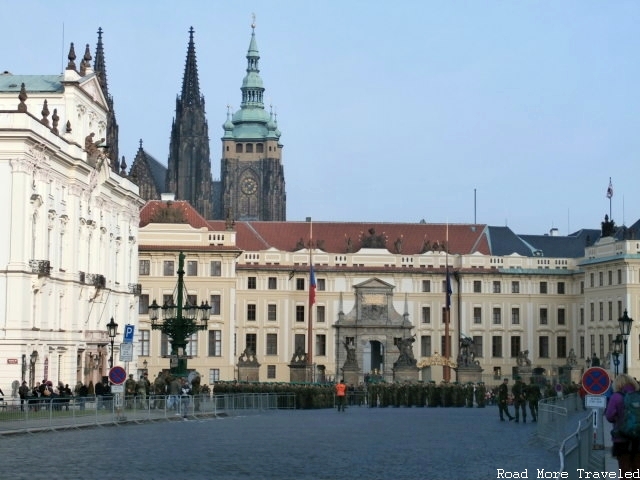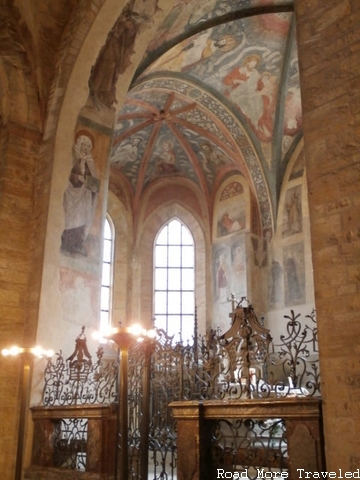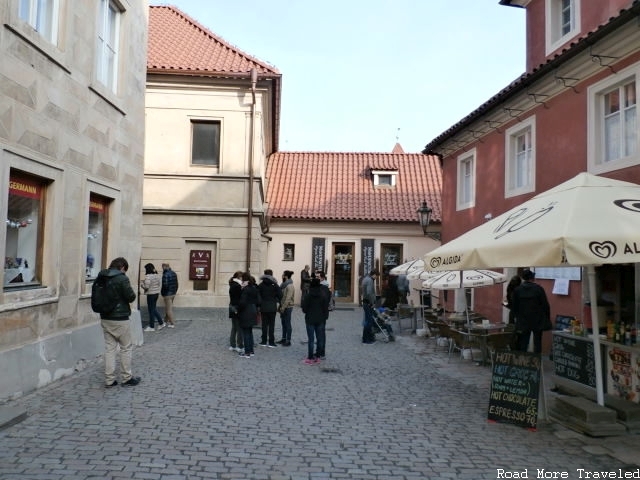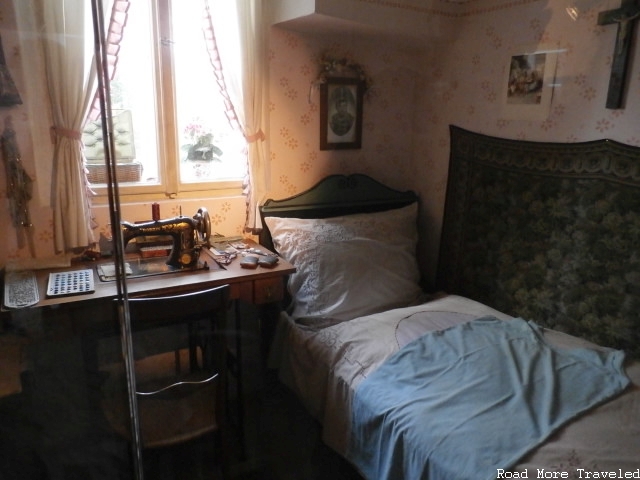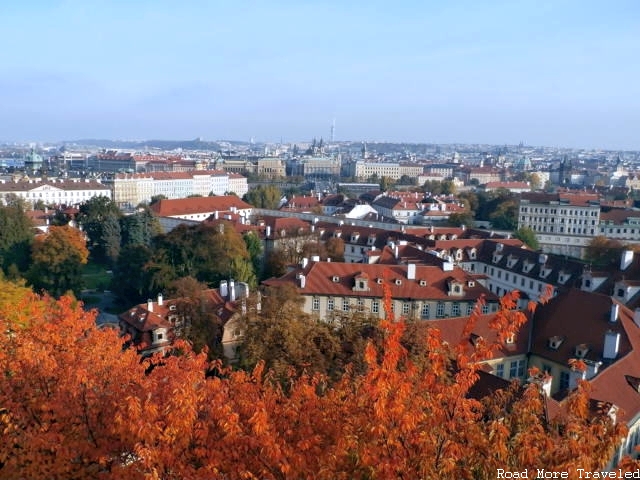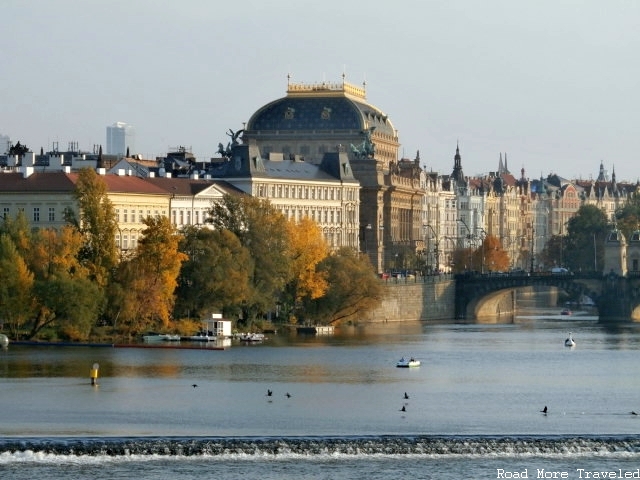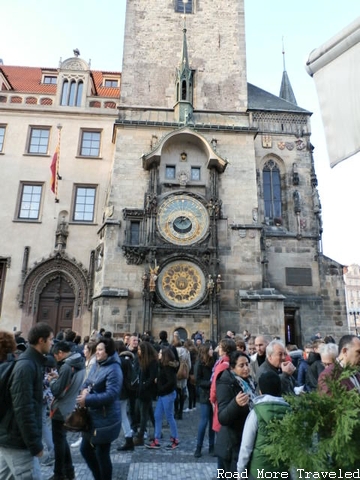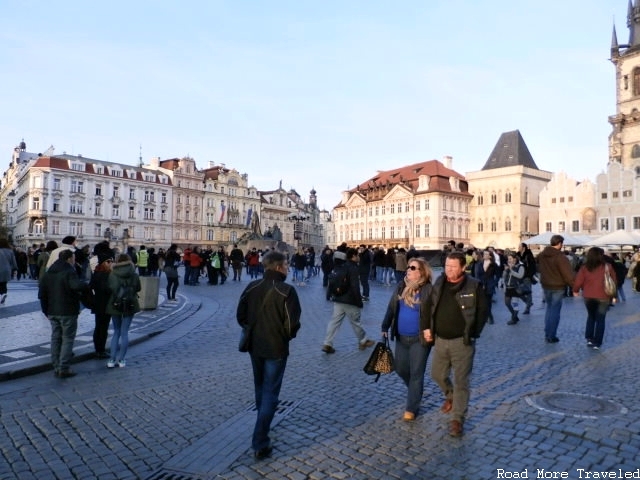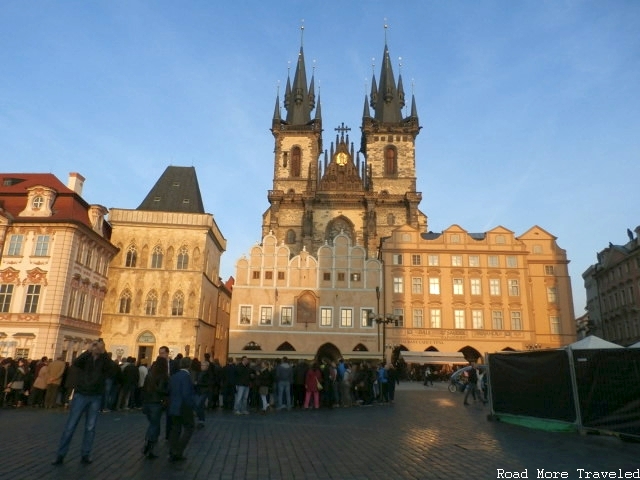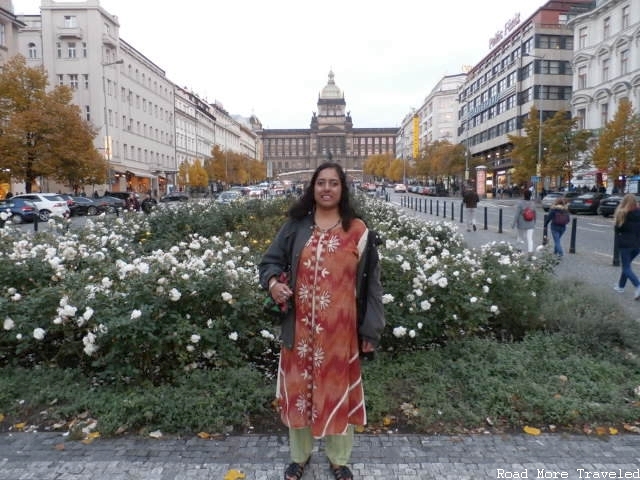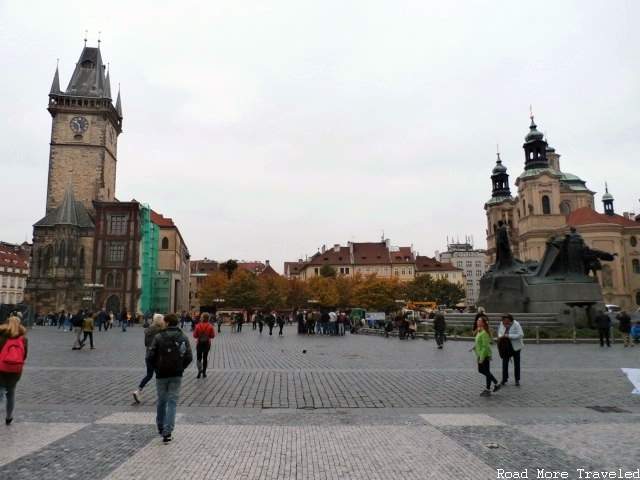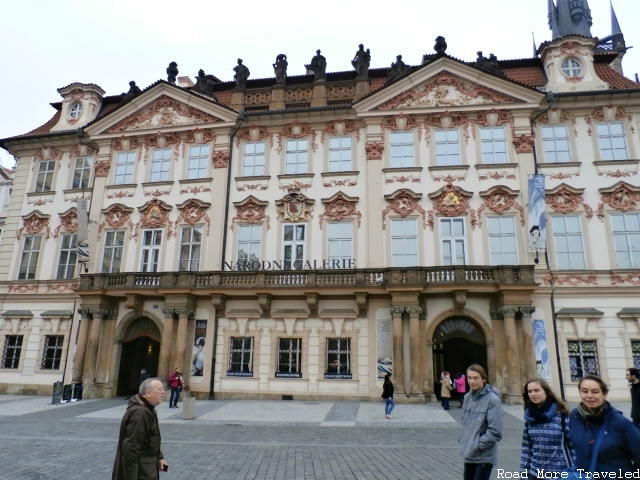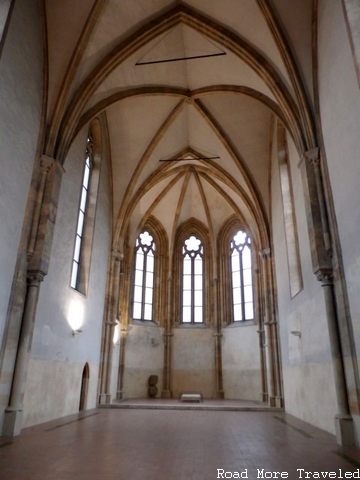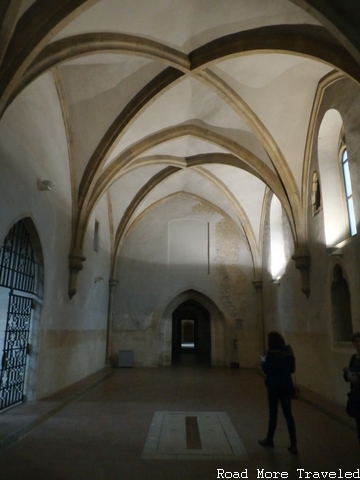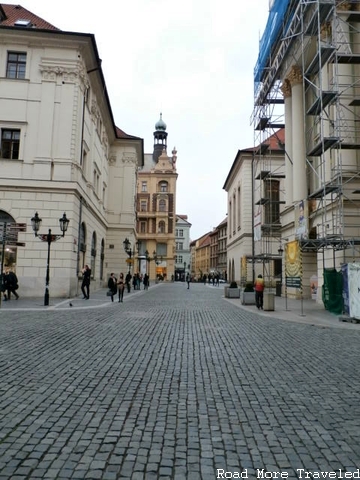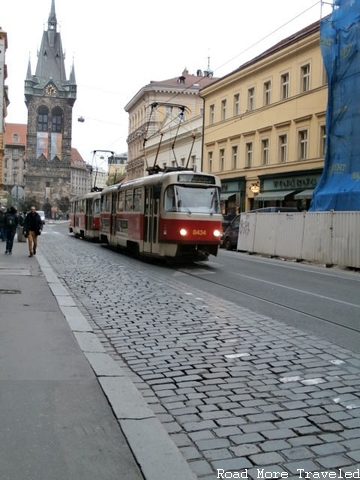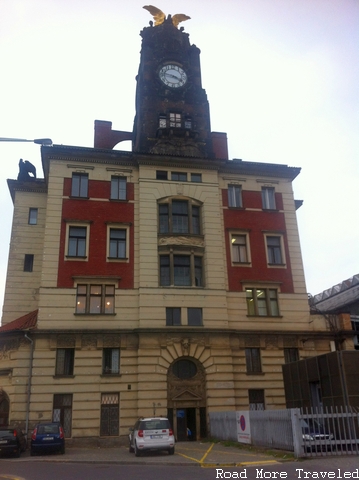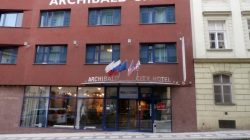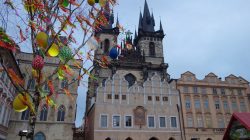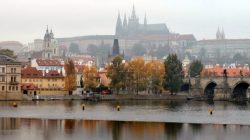Finally, time for our fall European adventure to begin in earnest. Our bus ride from the airport brought us to the Prague City Center about 5 P.M. That gave us roughly 48 hours in the beautiful City of Magic. Our base of operations would be the Archibald City Hotel, located a few blocks from Wenceslas Square and the National Museum. After getting off at the wrong bus stop, it took us about 30 minutes to walk to the hotel. We already endured a long overnight flight, a long day including walking around Paris, and another flight to Prague. With that in mind, we decided to rest up and begin our touring the next morning.
Aside from wanting to walk the historic Charles Bridge and see Prague Castle, we didn’t have much of a plan going in. The good news is, Prague is one of those cities where you can enjoy endless sights and entertainment just by getting out and walking around, so we just decided to play things by ear.
Note: I could go into much, much more detail about our stay in Prague and post many more pictures. However, I intend this as an “overview” type of post to give readers ideas for a two day visit. My next post will provide a more in-depth look at Prague Castle. You can also see all of my Prague photos on my Flickr account here.
Day 1 – Monday, October 26, 2015
I fought really hard to stay awake until at least 10 P.M., my personal trick for beating jet lag. Fortunately, I slept straight through the night, and woke up the next morning quite refreshed. Day 1 would be a half day at Prague Castle sandwiched around a self-guided walking tour of much of Lesser Town, Old Town, and New Town.
Our hotel was located on , one of the main streets through New Town, and we started off by heading west towards the Vltava River. The great thing about Prague is, even on a main commercial street, the architecture is a sight to see.
Just a five minute walk down this street brings you to the first site of significance, Charles Square. King Charles IV began building “New Town” in 1348, and wanted a square comparable to the existing Old Town Square. Thus came the idea for Charles Square. Believe it or not, this is actually the largest remaining square in Prague today. It’s generally much more peaceful than its big brother, Old Town Square. At the north end of the square is a memorial to Czech poet Vítězslava Hálek, as well as a nice view of New Town Hall. This is an administrative building dating back to the early 15th century.
An additional 10-15 minutes brings you to the river. Here, turn to the right (north) to head towards the Charles Bridge. Along the way, you see some spectacular views of the river, Lesser Town, and Prague Castle. The morning mist and the fall foliage approaching its peak really enhanced an already beautiful view.
Another 15 minutes (really less than 10 without all the photo stops) brings you to the historic Charles Bridge. Like Charles Square, Charles IV commissioned the bridge in the 14th century, with construction completed between 1357 and 1402. The bridge is best known for its gothic towers on both sides. It is also unique for the more than 30 statutes that line the entire length of the bridge. The Baroque statues were originally placed on the bridge c. 1700, but the ones you see today are replicas. The originals reside in the Lapidary museum.
If you come to Prague, a visit to the Charles Bridge is an absolute must. If you happen to stay in Old Town or New Town, I highly recommend a walk across the bridge to reach Prague Castle. But beware, it is pretty much constantly packed with tourists, even before 10 A.M. on a weekday in October. Get here early if you want to beat the crowds. You can spend as much time on the bridge as you’d like – the fantastic views of both the river and Old and Lesser Towns is highly addictive – but if you’re in a hurry, it only takes a few minutes to walk across.
Kostel Nejsvětějšího Salvátora at the east end of Charles Bridge
The “Old Town” tower
Walking across with the statues on both sides
The two towers guarding “Lesser Town”
I’m sure the name has a historical meaning, but Lesser Town (Mala Strana) is most certainly not an inferior quarter of the city. The settlement at the foot of Prague Castle traces its roots back to the 8th century. Most of the structures you see today, though, are either of Baroque or Renaissance styles from the 16th-18th centuries. Perhaps the best known attraction in the area is St. Nicholas Cathedral. Located just after the west end of the Charles Bridge, the cathedral originally dates to 1283. It was reconstructed in its current Baroque style in the 18th century.
The church is also a preferred venue for classical music concerts, with performances nightly except Tuesdays at 6:00 from March through October. In fact, none other than Wolfgang Amadeus Mozart played the organ at St. Nicholas in person when he lived in Prague. Concerts are insanely cheap, going for approximately 450 CZK (~$18) per person. My one great regret of our trip was not seeing a performance while we were in town. Incidentally, the church is open for tours, but we skipped it as we wanted to get to the castle.
From St. Nicholas Cathedral, it’s a fairly short walk to Prague Castle, but it involves climbing a steep hill. It wasn’t too bad the day of our visit, but it was cloudy and about 50 degrees outside. If visiting in summer, bring plenty of water. Though there are also several bakeries along the way, so you have a ready made excuse to get a kolache en route. Even with the slow going, 15 minutes later, we made it to our goal, the main gate of Prague Castle.
I’m working on a separate post with a more in-depth look at the castle, so I’ll just share a brief summary and a few photos here. The “castle” is actually a complex featuring several different sites, dating to the 9th century but not completed until 1920. Click here for a map of the castle grounds; various ticket packages are available depending on what you want to see, with comprehensive tickets running CZK 350 (approx. $14) per person. Tickets are good for TWO days, so don’t feel like you have to rush through everything at once.
Here’s a few highlights to whet your appetite until next week.
I’m guessing this palace guard wouldn’t appreciate the photoshopped hat
Sculpture in St. Vitus Cathedral
Interior of St. Vitus Cathedral
Exterior of St. Vitus Cathedral – the big gothic tower you see in most castle photos
Back at the main entrance, with St. Vitus in the background and a military parade out front
St. David’s Basilica
“Golden Lane”, an old medieval street
Old house on Golden Lane
Gorgeous views of Lesser Town and Old Town from the gardens
We finished up at the castle around 3, giving us a little time to look around before it got dark. Much to our good fortune, the sun had also come out, making the city appear even more vibrant. As we headed back east across the Charles Bridge, there are several spots where you can see an enormous gold-domed building across the river rising above Old Town – the National Theater.
The theater is relatively “new” in Prague-speak, dating to the late 19th century. As the name implies, the National Theater was built to exhibit theatrical and musical performances, and even today, you can still watch a variety of ballets, operas, Czech dramas, and musical concerts.
From the east end of the bridge, it is just a 15 minute walk to what is probably Prague’s most visited attractions – Old Town Square and the Astronomical Clock (Pražský orloj). The Astronomical Clock is the first thing you see as you approach from the west. Funny thing is, I had no idea what this was when I first saw it. I thought it was just a cool old clock that a bunch of tourists had gathered around. You may hear others tell you to gather around the clock at the hour to hear the chimes and watch the show. Don’t bother – we came back the next day at noon to see it, and it was lame. Definitely not worth getting crushed by hordes of curiosity seekers to watch. The clock itself is interesting, though getting a good photo is tough because of the insane crowds.
If you enjoy a challenge, try to tell the actual time by looking at the clock!
Move down a few feet, and the entire expanse of Old Town Square comes into view. Dating to the 10th century, the sqaure features stunning examples of old architecture no matter which direction you turn. But you’ll find a similar refrain here to much of the rest of Old Town and Lesser Town – you’ll have to dodge throngs of people in the afternoon. Then again, that makes this a good spot to grab a pretzel, kolache, or Czech sausage from a street vendor and people watch.
Perhaps the most striking building flanking the square is The Church of Our Lady before the Tyn, a gorgeous Gothic church completed in 1470. The church’s two towers are perhaps the most recognizable symbol of Prague, aside from Prague Castle.
Following a quick shopping stop in the area, we headed southeast back towards New Town and our hotel. With just enough daylight remaining, though, we had one last treat waiting for us as we reached the main, wide boulevard of New Town – Wenceslas Square, with an assist from some flowers still in bloom.
Yes, Good King Wenceslas was a real historical figure, a popular 10th-century Czech king that promoted the spread of Christianity in the nation. This square, perhaps more correctly termed a boulevard or parkway, was built in 1348 to honor him. If you’re hungry, and have no idea what you want, this is as good a place as any to come walk around. Wenceslas Square, and the adjoining side streets and alleys, are full of dining choices, ranging from street vendors to traditional Czech restaurants.
With darkness falling, that would do it for Day 1.
Day 2 – Tuesday, October 27
Our flight to Bucharest was scheduled for 7:30, and I had already arranged for a late check-out. We had originally planned to visit the National Museum (the building at the far end of Wenceslas Square) in the morning, followed by lunch, and then an hour or two to rest at the hotel before heading to the airport. Our plan was foiled from the start, though, as the building was closed for reconstruction. Doh! So instead, we headed back to Old Town Square. As you can see, if you want to experience the square with a little less hustle and bustle, come in the morning. This photo was taken around 10:30. That’s Old Town Hall on the left, and St. Nicholas Church on the right.
Our destination was Kinsky Palace, an impressive Rococco-style palace originally constructed as a residence for a wealthy Czech count, Jan Arnošt Golz, in the mid-18th century.
Today, it houses an art museum, the National Gallery in Prague, featuring art exhibitions of Asian and African art. The art collection is small though worth seeing, but unfortunately, photos are not allowed inside, so I don’t have anything to share.
The ticket we purchased was a combo ticket for both Kinsky Palace and the St. Agnes of Bohemia Convent, so we headed in that direction; it’s a 10-15 minute walk northeast from Old Town Square. The convent was built in the 13th century. Many regarded it as the most important convents in what was then Bohemia, and one of the most modern buildings in Prague. The ground floor of the building features a fine exhibition of medieval Czech art, but the real hidden gem is downstairs – the ruins of the original church, and the burial site of King Wenceslas.
The convent is a somewhat overlooked attraction in Prague, but is a must visit if you are an art and/or history buff, especially if you’re looking for someplace quieter.
After a quick lunch stop, we walked around Old Town to admire it some more, finding ourselves in a decidedly quiter quarter not far from Wenceslas Square. Those cobblestone streets and old buildings never get, well, old.
I had one last thing I wanted to do before heading back to the hotel, and that was grab a photo of one of Prague’s Soviet-era streetcars. Mission accomplished, but something behind the streetcar caught my eye that warranted further exploring.
Gee whiz, yet another Gothic building, this time the Jindrisska Tower. The tower was originally built in the 15th century, but has been reconstructed a couple of times since then, most recently in the 1870s. I really wish I had found out about this place a few hours earlier, as there is an observation deck at the top of the tower which provides a panoramic view of the city. I’m sure the view would have been incredible.
We made it back to the hotel around 2:15 for a quick rest before heading for the main bus station to catch the Airport Express bus back to the airport. That proved to be an adventure, not because of the distance, but the condition of the roads to get there. Shortly after passing the National Museum, pedestrians have to negotiate a 4-lane bridge featuring heavy traffic, but no shoulder or sidewalk. Not fun when you’re trying to roll bags. Word to the wise, think twice about using the main road to get to the station. Anyway, the great thing about Prague is that there’s beauty everywhere, even at the train station.
And that brought two days in Prague to a close. Come back for my next installment for a closer look at the amazing Prague Castle.
This post is part of my trip report series about our trip to the Czech Republic and Romania in October. Click here for the introductory post and trip report index.


